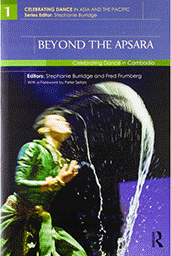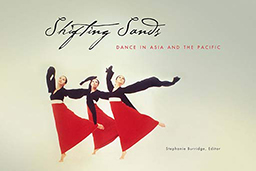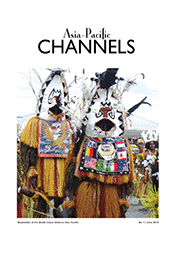We are Australia's main publisher of dance research, dance artists' voices, Safe Dance practice fact sheets, guidelines for teaching dance and running a dance business, and industry journals.
Supporting, promoting and publishing writing about dance practice, dance research and dance teaching plays an important role in raising the profile of Australian dance researchers and dance artists, contributes to the sustainability of dance careers, and provides important health, safety and wellbeing information to dance professionals and the general public.
Dance research
World Dance Alliance Global Summit papers
Dance, young people and change
 Proceedings of the 2012 daCi and WDA Global Dance Summit—66 articles across six topics: teaching dance, dance as social justice, education of dance teachers and artists, dance learning, curriculum
Proceedings of the 2012 daCi and WDA Global Dance Summit—66 articles across six topics: teaching dance, dance as social justice, education of dance teachers and artists, dance learning, curriculumThe 2012 Global Dance Summit: Dance, Young People and Change, held at Taipei National University of the Arts (TNUA) in Taiwan 14–20 July 2012, was organised collaboratively between Dance and the Child International (daCi) and World Dance Alliance (WDA) and hosted by TNUA. The summit attracted more than 1500 delegates of all ages, from over thirty countries. The program included performances and workshops for and by young people and adults, as well as presentations of research papers and panels and professional projects.
Dance dialogues: Conversations across cultures, artforms and practices
 Refereed proceedings of the World Dance Alliance Global Summit 2008 reflect its rich diversity, dynamic energy and thoughtful re-appraisal of what dance is and might be in the 21st century.
Refereed proceedings of the World Dance Alliance Global Summit 2008 reflect its rich diversity, dynamic energy and thoughtful re-appraisal of what dance is and might be in the 21st century.The 2008 World Dance Alliance Global Summit attracted over 400 artists, educators, scholars, scientists and health professionals from 28 countries, who converged on Brisbane for six days contributing to its four themes across five platforms. The aim of this multi-platform event was to privilege both the voice and the practices of our emerging and experienced artists and to encourage interdisciplinarity of practice and academic scholarship. It was based around four major issues facing the arts in the 21st century: transcultural conversations, re-thinking the way we make/teach dance, body/mind connections, and sustainability.
Dance journals
Brolga–an Australian journal about dance
Brolga publishes current research and critical thinking about dance, including:
- dance artists—cutting-edge and emerging practices
- exploration of historical events, performances and people
- discussions on dance and education
- academic papers about philosophy, composition, criticism, music and costume for dance
- reviews of recent dance publications.
Ausdance has published Brolga for last 20 years. Its contributing authors have diverse backgrounds and interests and represent a broad spectrum of the dance community. Papers may be peer reviewed on request. Brolga has a B rating on the ERA journals list released by Deakin University, 2008. Editors include Michelle Potter, Alan Brissenden, Robin Grove, Amanda Card, Rachel Fensham, Alexandra Kolb and Associate Professor Maggie Phillips.
Dance artists' voices
Shaping the Landscape: Celebrating Dance in Australia
Our partnership with the World Dance Alliance Asia–Pacific led to Shaping the Landscape: Celebrating Dance in Australia, part of the 'Celebrating Dance in Asia and the Pacific' series. Reflecting the creative engagement of artists with Australian culture and landscape, this fourth book in the series explores the Australian dance scene from a wide perspective.
 The Celebrating Dance in Asia and the Pacific series presents the views of dance scholars and commentators alongside the voices of a new generation of choreographers working from tradition to create new forms of expression in contemporary dance. It documents and celebrates these artistic journeys that work within the framework of rich and complex cultural heritages.
The Celebrating Dance in Asia and the Pacific series presents the views of dance scholars and commentators alongside the voices of a new generation of choreographers working from tradition to create new forms of expression in contemporary dance. It documents and celebrates these artistic journeys that work within the framework of rich and complex cultural heritages. Books in the series: Beyond the Apsara—Celebrating Dance in Cambodia (November 2009); Traversing Tradition—Celebrating Dance in India (April 2011); Sharing Identities—Celebrating Dance in Malaysia (August 2011); Shaping the Landscape—Celebrating Dance in Australia (October 2011); Identity and Diversity—Celebrating Dance in Taiwan (March 2013); Moving Oceans—Celebrating Dance in the South Pacific.
Shifting Sands: Dance in Asia and the Pacific
 Shifting Sands: Dance in Asia and the Pacific (2006) presents 13 essays by Australian and Asian dance writers plus a large collection of shorter articles and stories from practising artists and critics sharing personal insights and experiences.
Shifting Sands: Dance in Asia and the Pacific (2006) presents 13 essays by Australian and Asian dance writers plus a large collection of shorter articles and stories from practising artists and critics sharing personal insights and experiences.Guidelines and codes
For almost 30 years, Ausdance has worked with dance teaching societies, organisations and teachers looking for the best approach to support the dance industry and students in building and maintaining healthy careers. Ausdance continues to compile and distribute information and guidelines about Safe Dance® and dance training, focusing particularly on issues of quality and safety.
The Australian Guidelines for Teaching Dance propose minimum standards for dance teaching and ways teachers can uphold or upgrade their teaching skills. In an unregulated industry, we consulted with a broad range of dance teaching societies to create and gain endorsement for a Code of ethics for dance teachers and Code of ethics for parents. We also provide information about child protection legislation in each jurisdiction. Our Safe Dance® factsheets are reviewed by industry professionals and our business practice fact sheets are written in response to dance artists' surveys and dance teachers' frequently asked questions.
Safe Dance® factsheets
Our extensive collection of Safe Dance® fact sheets provide information about creating a safe dance environment, increasing awareness of the body and how it functions, and minimising risk of both accident and injury.
Professional business practice fact sheets
Dance makers and dance teachers are often business owners as well, so these fact sheets have been prepared to help deal with questions about hiring and paying staff, insurance and risk management, copyright issues, ethical behaviour.
Teaching dance
Australian Guidelines for Teaching Dance
Revised in 2011, the Australian Guidelines for Teaching Dance suggests minimum standards for dance teaching and ways teachers can maintain or upgrade their teaching skills. It is divided into three sections: effective teaching methods, Safe Dance® practice and business practice for studio teachers.
Code of ethics for dance teachers
We devised this code with leading representatives of Australia's studio teachers. It helps teachers understand the ethical standards expected of teachers in the profession.
Newsletters
Asia–Pacific Channels
 Asia–Pacific Channels is the biannual newsletter of the World Dance Alliance (WDA), published by Ausdance National in collaboration with MyDance Alliance in Malaysia. It profiles dance events and activities from WDA members throughout the Asia–Pacific region. Channels is available free to download from the Ausdance website.
Asia–Pacific Channels is the biannual newsletter of the World Dance Alliance (WDA), published by Ausdance National in collaboration with MyDance Alliance in Malaysia. It profiles dance events and activities from WDA members throughout the Asia–Pacific region. Channels is available free to download from the Ausdance website.
